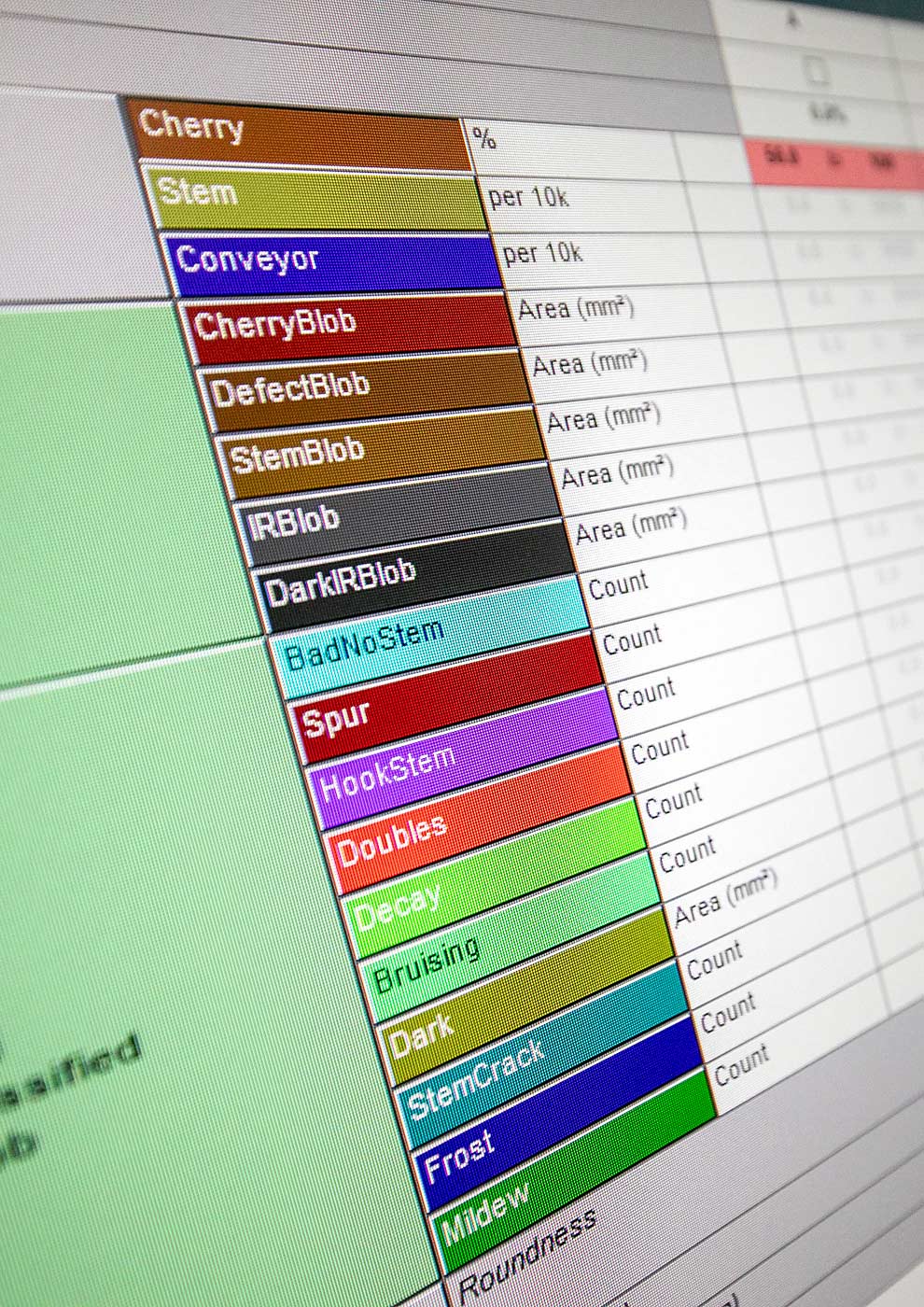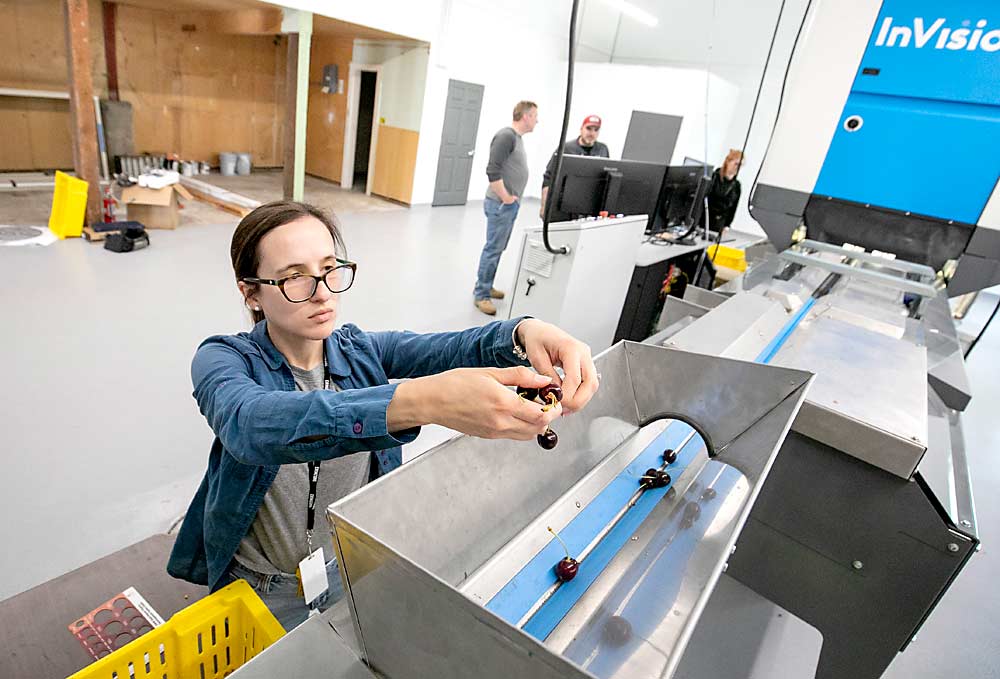
Last season, the Washington State University cherry breeding program installed a new optical sorting line, just like those found at big packing facilities.
“This is basically a scaled-down version of what you would see in a commercial fruit packing warehouse,” WSU cherry breeder Per McCord said at a field day in late June at the university’s Irrigated Agriculture Research and Extension Center near Prosser. Optical sorters take dozens of digital images of each piece of fruit that passes along the line.
The single-lane InVision2 sorter will allow McCord’s breeding team to collect data about fruit size, color and defects more quickly and accurately, he said. The sorter was developed by Compac, a New Zealand company purchased by Norway’s Tomra in 2017.

The machine, which staff began operating in May, cost about $300,000, not including building renovations. A grant from AgWest Farm Credit paid for it.
McCord sees three advantages to the line:
—The machine will handle larger sample sizes — all their trial fruit, as a matter of fact. Previously, students and technicians only collected data from small samples because they had to measure by hand.
—Data will be unbiased. Even diligent workers log inconsistent results when they are hot or tired.
—Data will be presented in reports similar to the warehouse packouts growers currently receive.
The sorter can’t do everything, of course. Staff will still measure some characteristics, such as firmness and Brix, by hand.
The line has been on McCord’s wish list since he started at WSU in 2018. He was warned not to get his hopes up, but he kept researching, and the funding opportunity surfaced, he said.
Other researchers have access to the line, too. Tree fruit physiologist Matt Whiting used it for some of his mechanically harvested cherries.
McCord and research assistant Marcella Galeni spent most of the machine’s first few months “mapping,” or teaching the computer what to look for in the fruit and how to score it.

“The map is not completely set up … we just started working on it,” Galeni told the group at the field day last June as she poured a few cherries onto the line. The computer screens showed a chart listing cracked skin, bruises, the lack of a stem and other characteristics she will program the new tool to track. Galeni collected images of fruit that the sorter will retroactively score after mapping is complete.
The breeding team also continued to sample fruit by hand last summer, to collect comparative data.
McCord originally planned to use the machine to measure cherries in Phase 2 or Phase 3 trials, but he now believes it has the capacity to include Phase 1 fruit. The breeding program had three selections in Phase 3, which means trials in commercial blocks, one of the final steps before commercial release. R-3 and R-19 trees produced enough fruit to test last year. R-29 is a year behind.

The line will bring overall efficiency to the university’s breeding efforts, said Dena Ybarra, a nursery owner and member of the breeding program’s advisory committee. It also will give researchers a chance to see how well selections store after being handled in a way they will be if released commercially.
Yakima Valley cherry grower Mark Hanrahan lauded the new tool for providing McCord’s team consistent ways to measure success or failure that line up with the real world of cherries.
“That’s going to be the big thing for them, to get that line as close to industry standards,” said Hanrahan, also a member of the breeding program’s advisory committee.
—by Ross Courtney







Leave A Comment